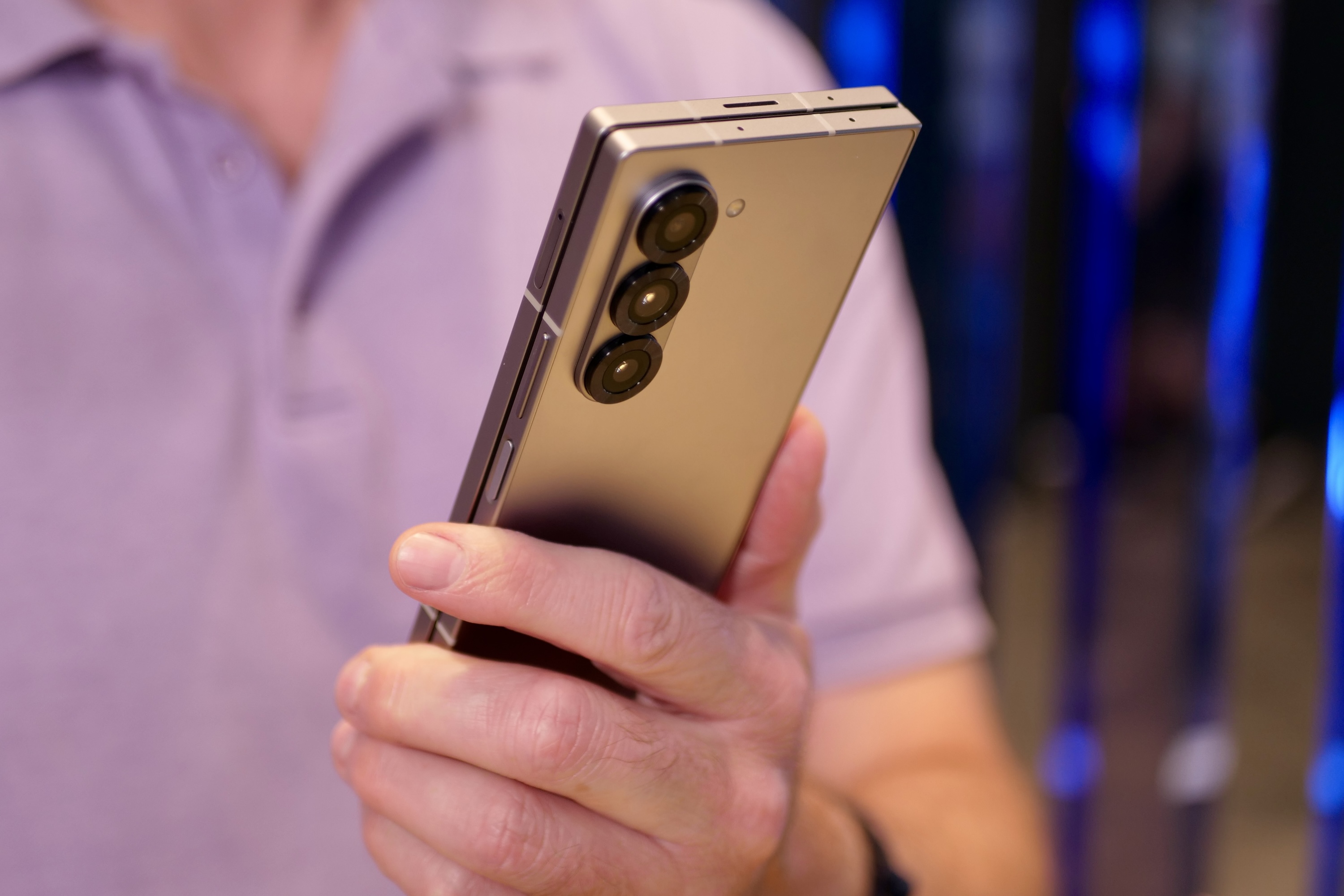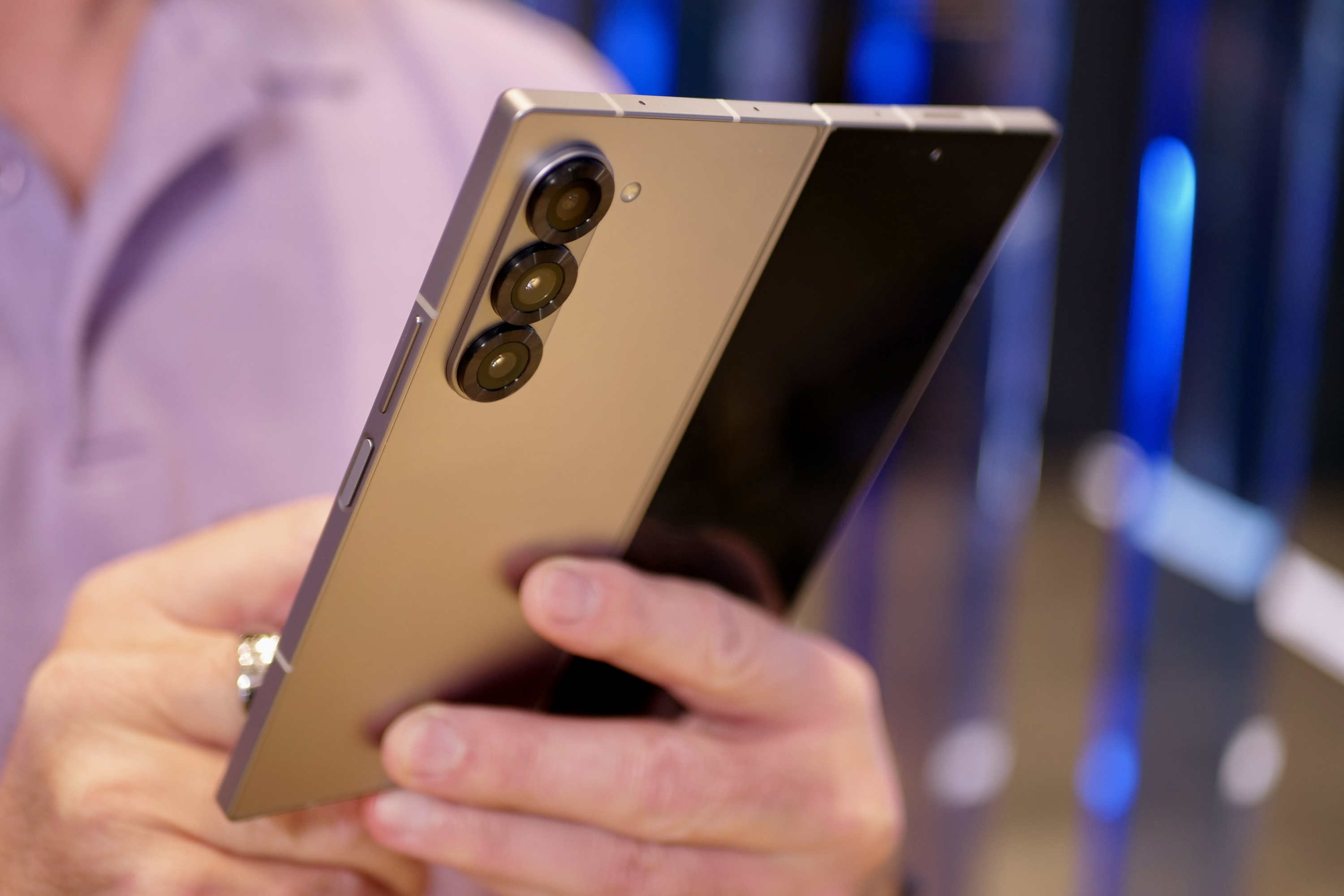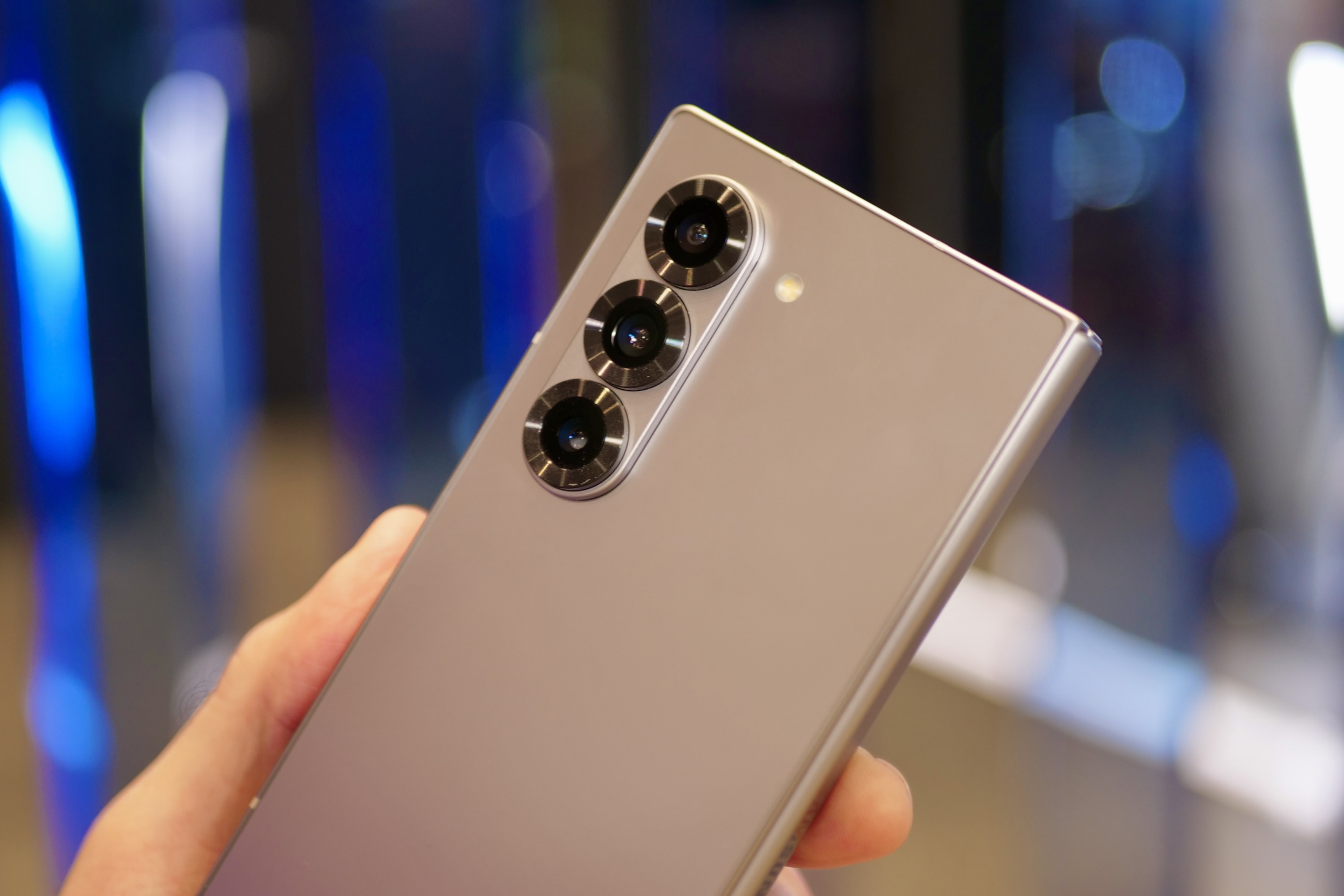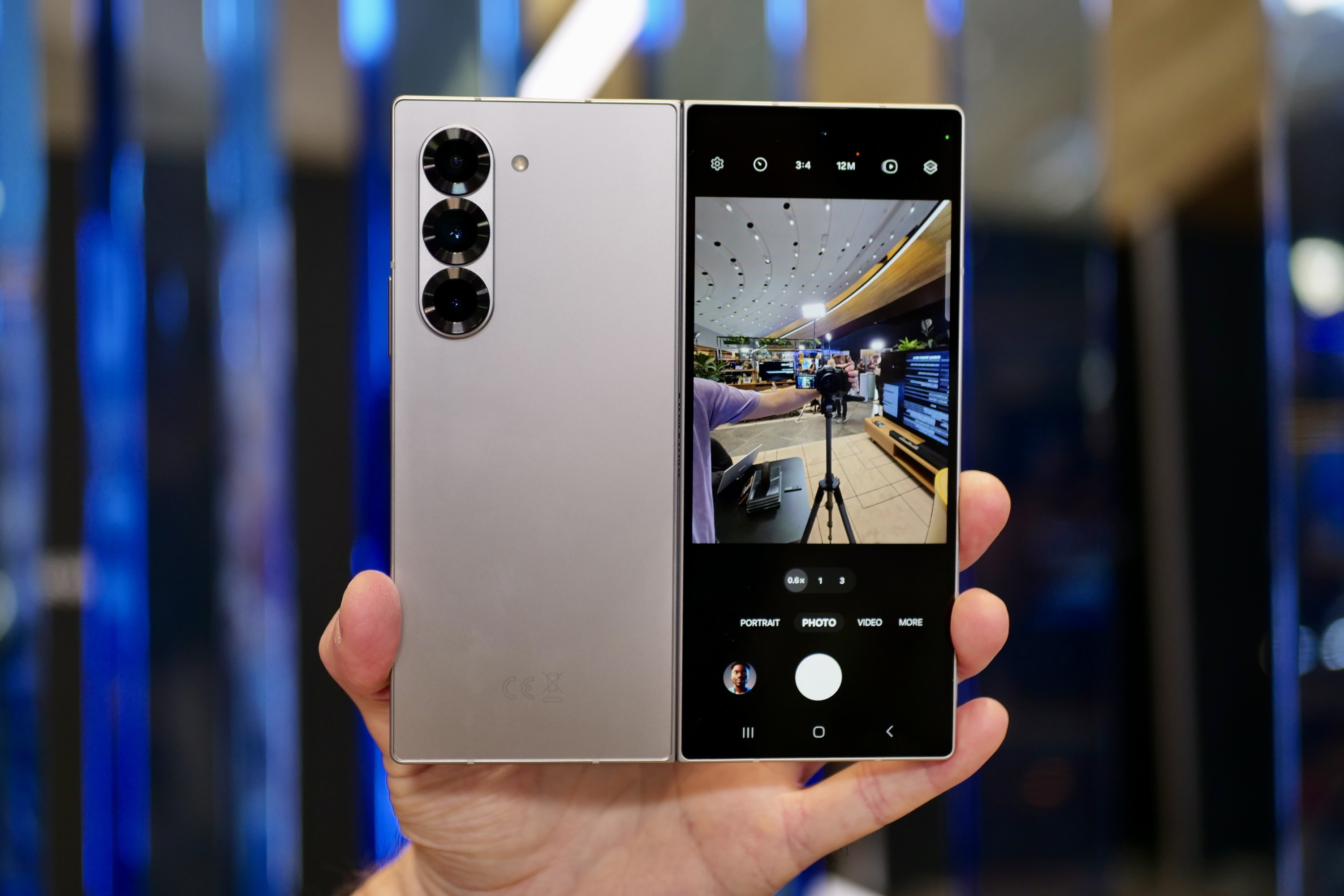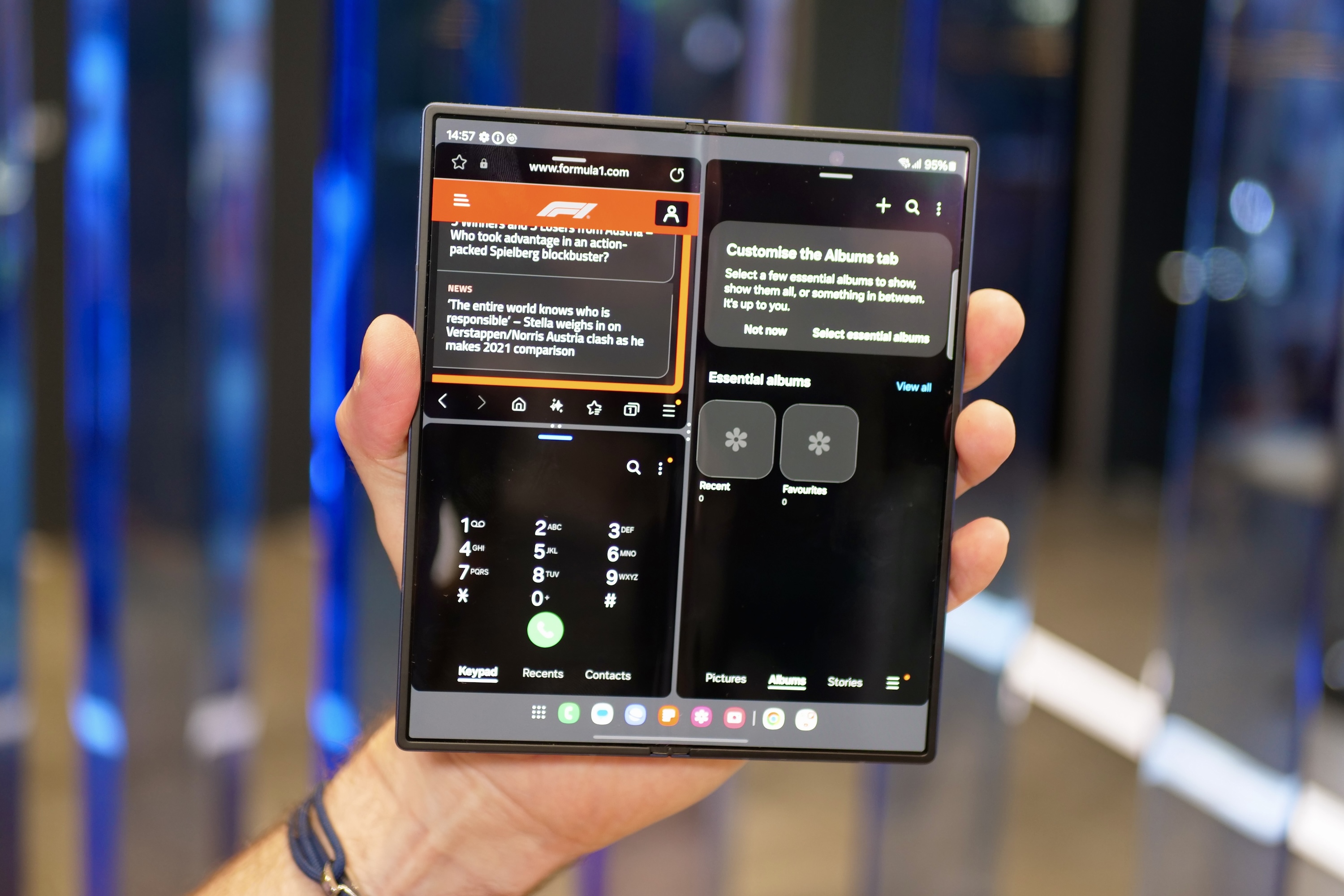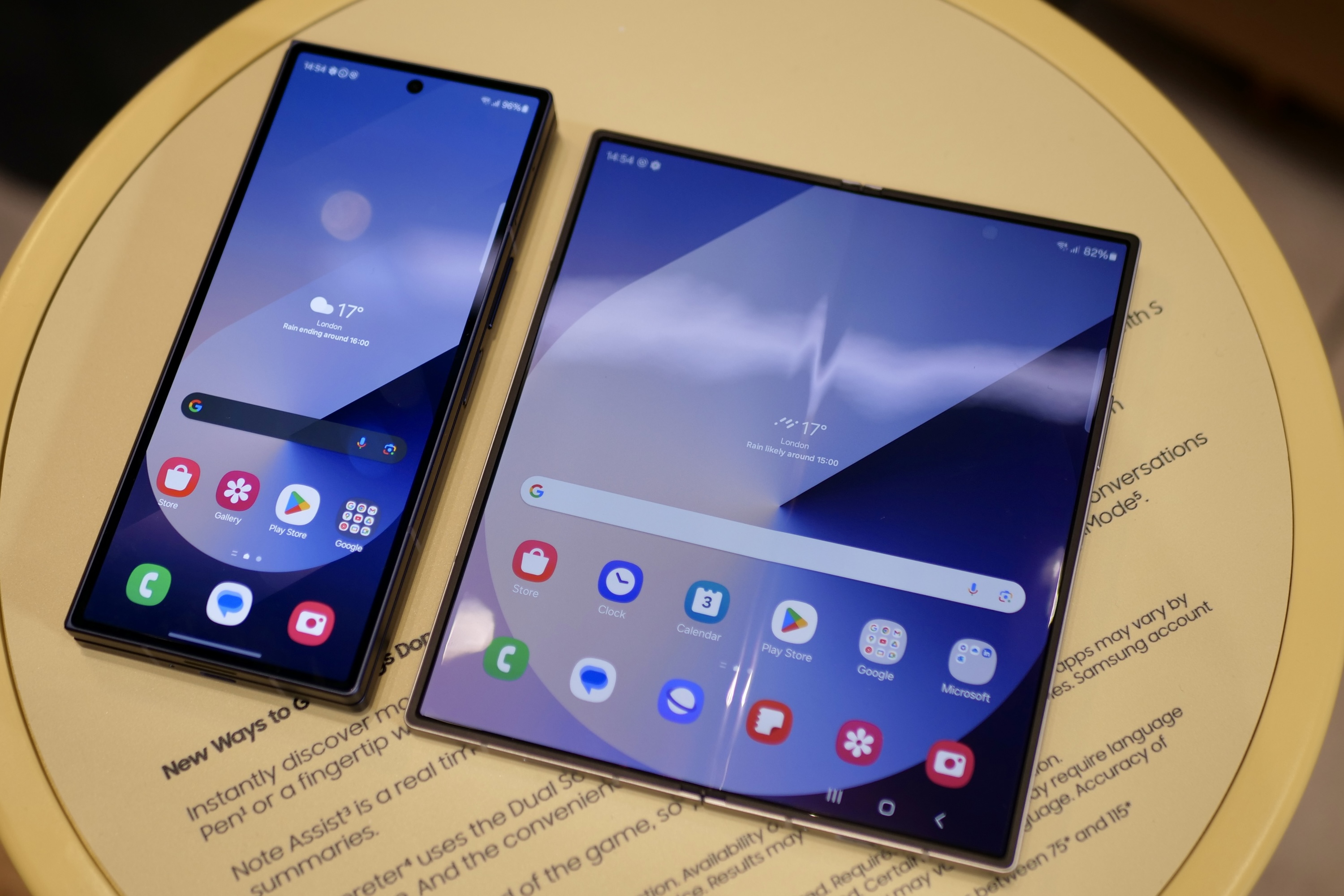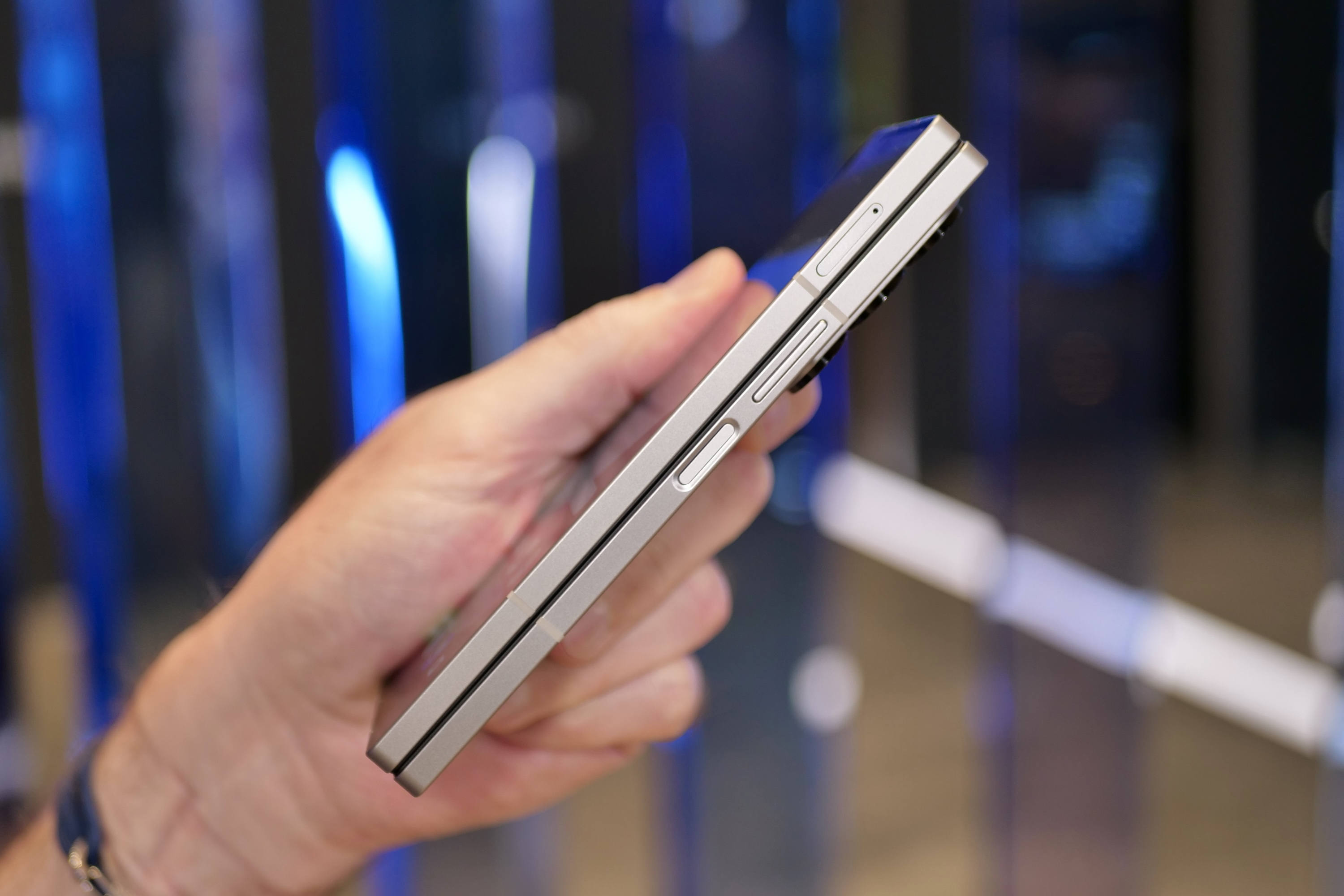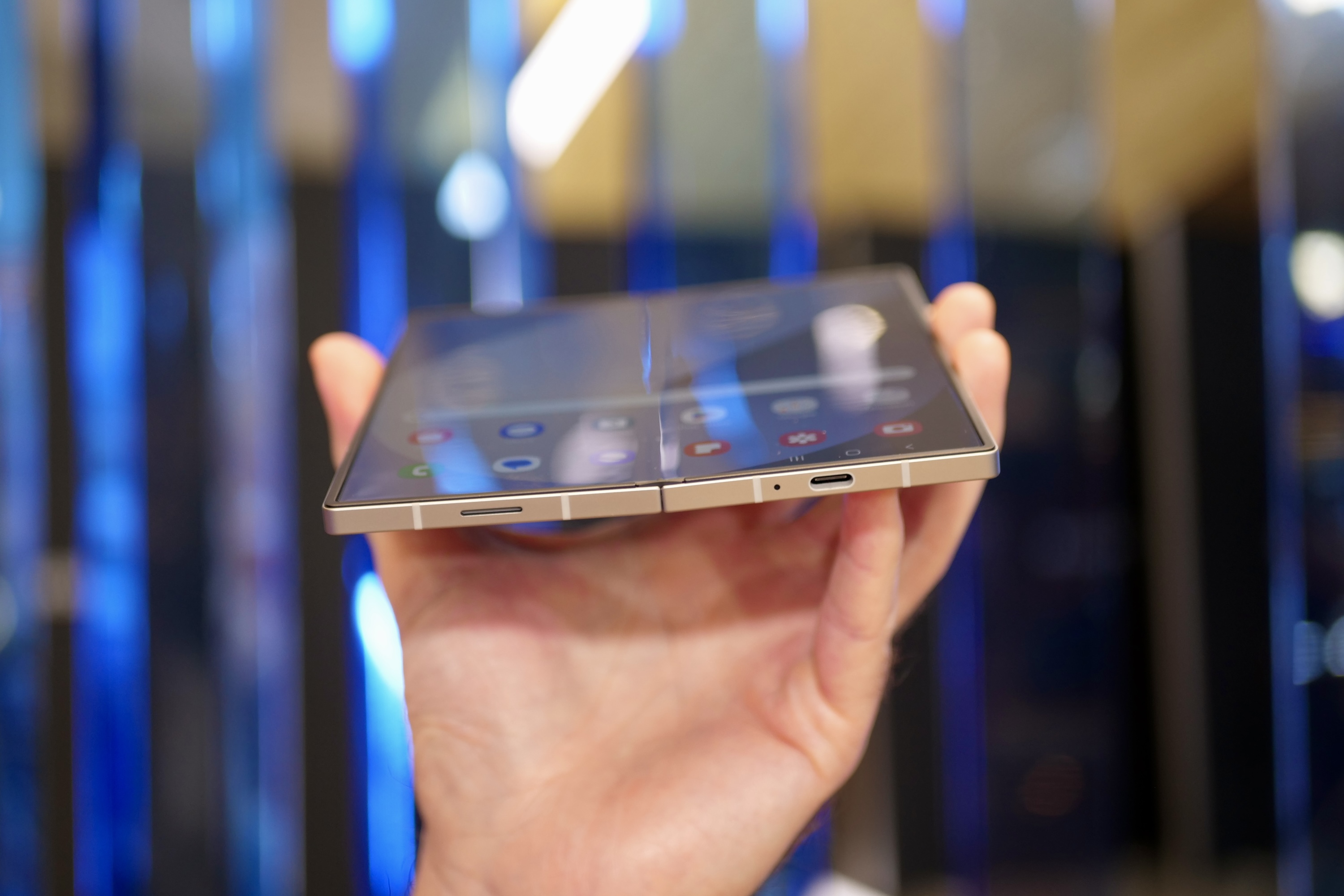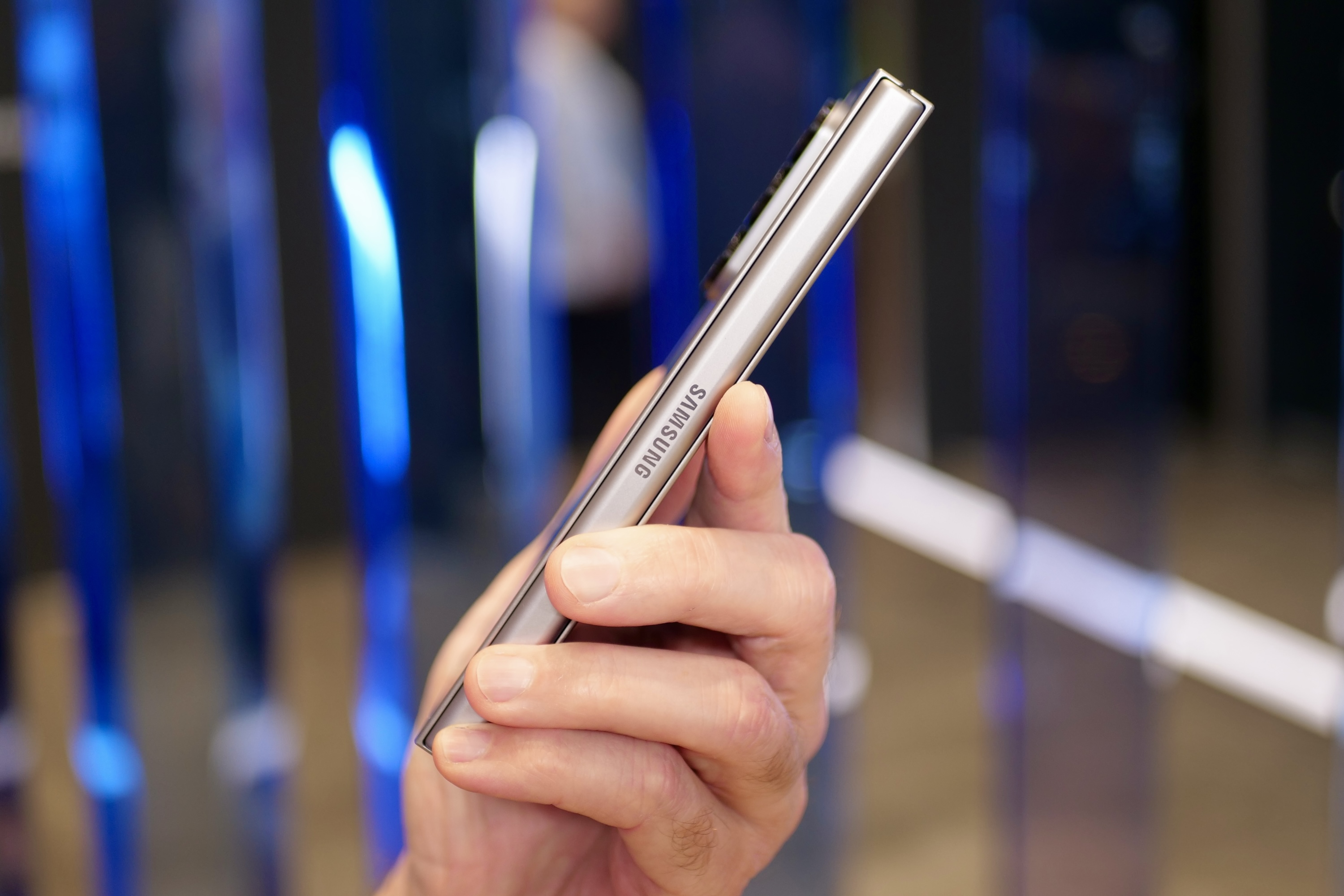
Repeat after me: thinner and lighter make foldable phones better. This is the mantra I want you to recall when you lay your hands and eyes on the new Samsung Galaxy Z Fold 6, as it’s the best thing about the phone so far — at least in the short time I’ve used it.
The trouble is that Samsung wants to distract you with its Galaxy AI features, which it seems set to really push with this release. Unfortunately, they are nowhere near as enticing as it thinks they are. Thankfully, the rest of the phone seems pretty darn great.
The Galaxy Z Fold 6’s biggest upgrade
The Galaxy Z Fold 5 was thinner and lighter than the Galaxy Z Fold 4, and once again, Samsung’s engineers have successfully shaved even more off the size and weight of its big-screen foldable. Folded up, it’s only 12.1mm thick, so while it’s still thicker than most big-screen non-folding phones, it’s only by a few millimeters and getting far less problematic than it once was. I put it in my pocket, and it didn’t really feel any different from the iPhone 15 Pro Max in the other pocket. It weighs just as much and is equally thick inside a case.
Perhaps surprisingly, the Galaxy Z Fold 6 has gotten bigger in all the right places despite these important reductions. Unfolded, the screen is 2.7mm wider than before, and the cover screen is a millimeter wider and has smaller bezels, which has brought about a slight change in aspect ratio. As with the weight — 239 grams, or 14 grams less than the Galaxy Z Fold 5 — it’s becoming a more “normal” phone to hold and use. I found typing, swiping, and interacting with the cover screen pleasurable and not at all awkward to use. However, I’m sure I’ll still notice more fatigue from holding it upright for longer periods of time.

Samsung has made the right decision to emphasize durability, too. Enhanced Armor Aluminum covers the phone, there’s Gorilla Glass Victus 2 over the cover screen, a new protective layer over the inner screen, and improvements in strength across the folding edge and screen crease. There’s IP48 water and dust resistance, too. Although not up to the top standard, it is still enough to keep the phone safe in most normal usage situations.
When you look closely at the phone itself, the ends of the hinge section have been suitably refined so that they’re almost as invisible as the gap between sections when the phone is closed. Genuinely, the Galaxy Z Fold 6 is a beautiful piece of engineering.
What’s all this about AI?
The Samsung Galaxy Z Fold 6 as a mobile device is superb, and the shape and size are being (slowly) refined to where everyone can justify owning and using a big-screen folding phone. However, we’re at the point where Samsung doesn’t seem to know how to make the phone and its features interesting and desirable, and appears too shy to use the fact the phone folds up as the primary reason you should purchase it. This isn’t a camera phone, and there are barely any changes compared to the last model, so Samsung has turned to Galaxy AI to do the heavy lifting when it comes to additional appeal.
Unfortunately, the multiple Galaxy AI features onboard hold only niche appeal, and while they are undoubtedly technically impressive, as they were being explained to me, I struggled to imagine how often I’d use them. For example, Interpreter mode works in Flex Mode, where the outer screen shows the translation of your words to the other person, and the inner screen shows their translation to you. It’s clever, and there are obvious real-world benefits. But how often will I actually use it? Far fewer times than I’ll marvel at opening and closing the phone, that’s for sure.
Galaxy AI does a lot of summarizing, translating, and curation, adding some appeal to the Z Fold 6’s obvious productivity advantages over a non-folding phone, but as Google showed us during Google I/O 2024, there’s only so much we can take.
For good measure, there are a few AI-assisted modes that change your photos. Want the AI to add a realistic-looking pair of glasses to a photo of your dog’s face? Galaxy AI can do that, apparently. Perhaps I was extra curmudgeonly on the day this was shown off, but how often would anyone want to do something like that? Once or twice, maybe, and then I think the novelty will wear off.
That’s the trouble with pushing Galaxy AI as a reason to buy the Galaxy Z Fold 6. None of the features sound like ones you’d use more than a few times, and even when you do, it would only be in very specific circumstances. I’m just not sold on it, no matter how well it may all work.
Samsung is missing the point

Concentrating on Galaxy AI is obviously important for Samsung from a business perspective, and it’s there in all the latest Samsung products — from the Z Fold 6 to the Galaxy Ring — but I can’t see it holding much appeal for the general public. The thing is, what’s special about the Galaxy Z Fold 6 is what was special about the original Galaxy Fold and all the models that have come since: It folds up and is a gaming, media, and productivity powerhouse that barely needs AI to improve it.
Using multiple apps on the massive 7.6-inch screen is so easy. It has been a while since I used a Galaxy Z Fold phone, but I quickly remembered how to view several apps at the same time as it’s so intuitive. The speed and fluidity of the process and using the apps are impressive, and there’s no hint of anything but mega performance from the Qualcomm Snapdragon 8 Gen 3. Maybe I’d use Galaxy AI’s Note Assist mode — which automatically formats and summarizes text — but that’s not the headline productivity feature at all. No, it’s because you’re doing it on a massive screen that you can fold in half when you’re done.

When you tune out Samsung’s AI obsession and look at the hard numbers behind the Galaxy Z Fold 6’s hardware — then remember the fact it folds up and makes it cool in the first place — you’ll finally understand why this is the best version of the phone yet. As each Z Fold iteration is released, it gets more comfortable to hold and use, and more durable, lighter, and slimmer than before.
The Galaxy Z Fold 6 doesn’t need AI to be desirable, and in my short time with it, I quickly found out it’s the most desirable model yet because it’s also the most normal yet.
